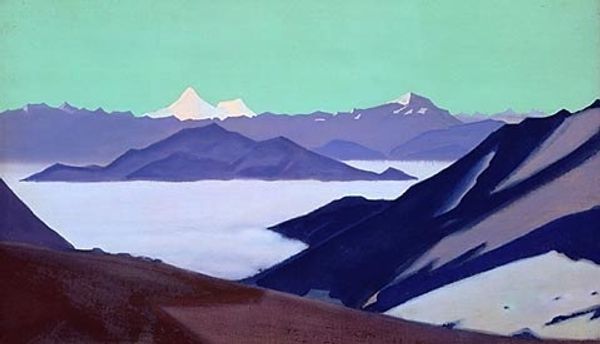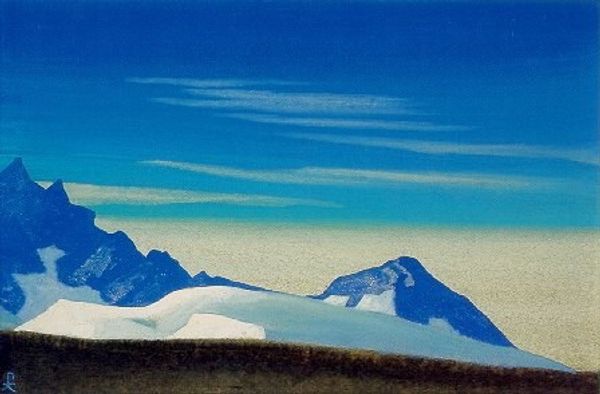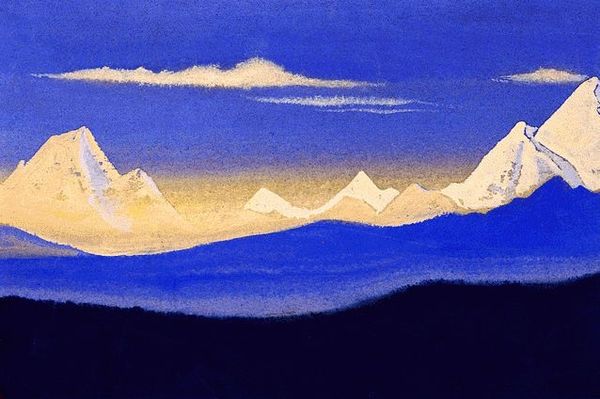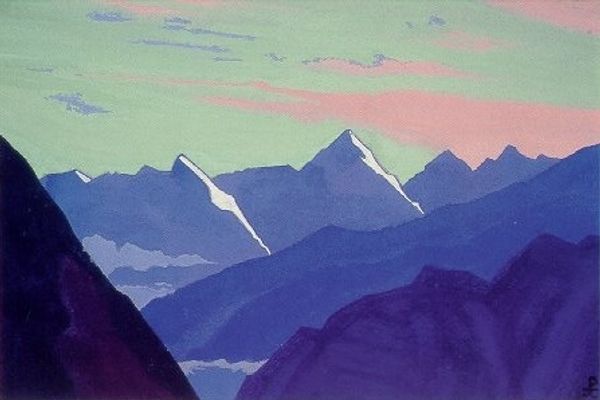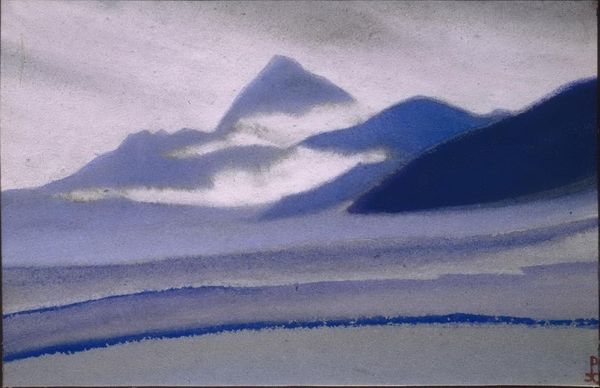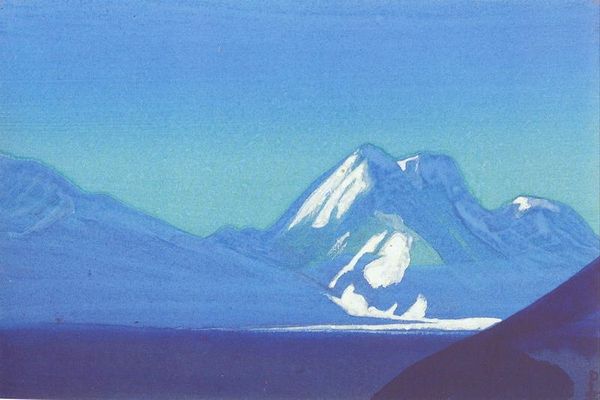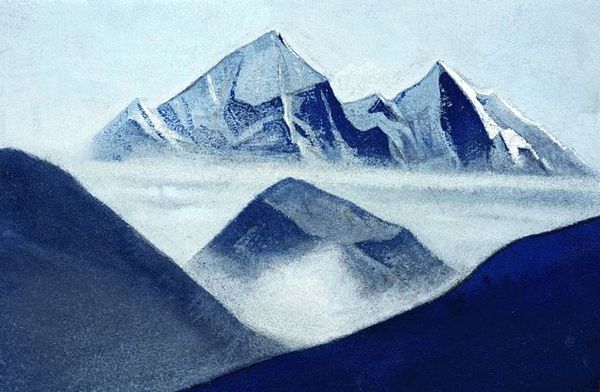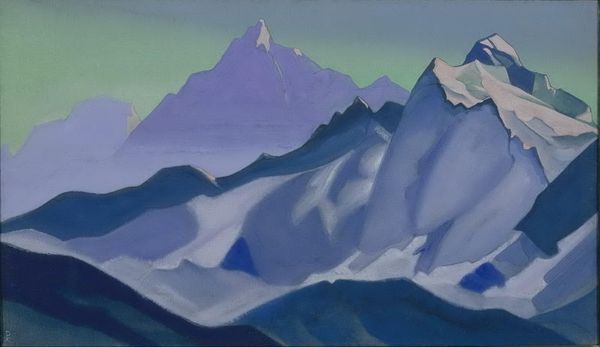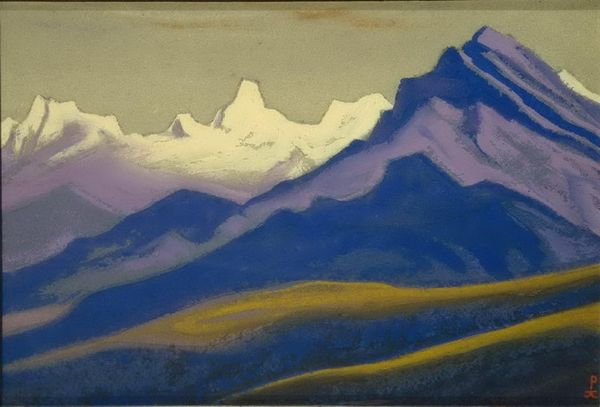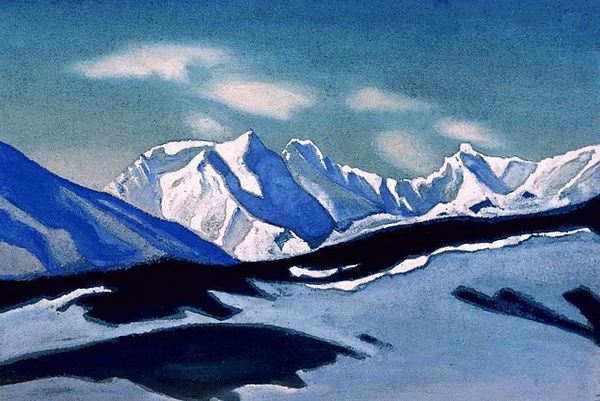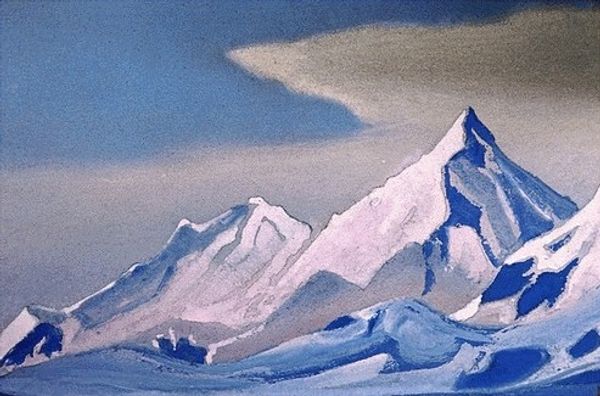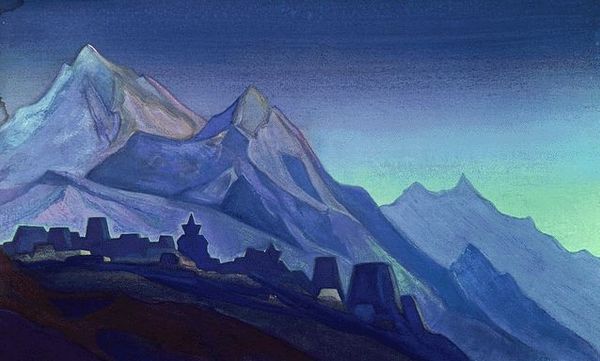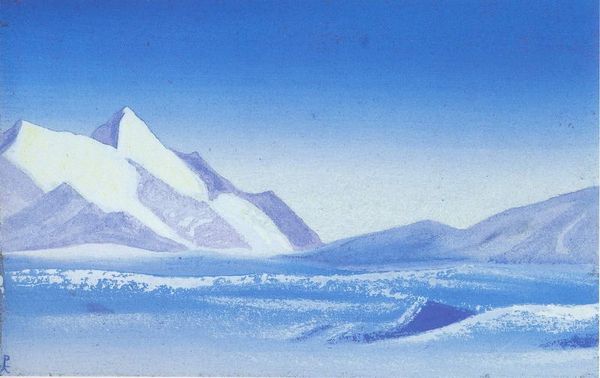
Copyright: Public domain
Curator: At first glance, I see stillness. A hushed reverence captured in a spectrum of blues. Editor: This is "Fog in the Mountains. Himalayas." an oil painting by Nicholas Roerich, created in 1930. The layered mountain ranges invite reflection on grand, even imperial scales. But this period also corresponds with the rise of anti-colonial movements across Asia. Does Roerich acknowledge these human struggles within such sublime natural grandeur? Curator: The mountain as a symbol, and these mountains in particular, held profound spiritual significance for Roerich. The Himalayas represented a gateway to higher consciousness. That hazy light feels less like atmospheric effect and more like a beckoning. Note also the striking symmetry and simple forms--almost archetypal mountains that act as more than landscape alone. Editor: The simplification of form you mention—that’s part of what unsettles me. There is almost an erasure here, of human presence and the communities shaped by these mountains. Who has access to this “higher consciousness," and at what cost? Were the indigenous inhabitants recognized within his art and social activism, or was there instead cultural appropriation within his orientalist leanings? Curator: It's true that Roerich was part of the Theosophical Society and sought some unifying spiritual truth in Eastern religions. We must remember, though, that the symbol of the mountain resonates across diverse cultures and geographies as a place of sacred revelation, social disruption, even divine authority. Here, that enduring idea might invite multiple readings, regardless of the artist's possible prejudices. Editor: A multitude of readings – I agree entirely. The deceptively simple forms almost conceal the complexities involved. What stories do we choose to amplify or leave muted when we represent landscapes like these? Ultimately, an art piece invites discussion rather than presenting simple meanings. Curator: It asks that we keep our own internal compass pointed towards greater openness. Editor: And interrogations of power and representation in visual culture. Let's remember to continue asking vital questions and reflecting.
Comments
No comments
Be the first to comment and join the conversation on the ultimate creative platform.
